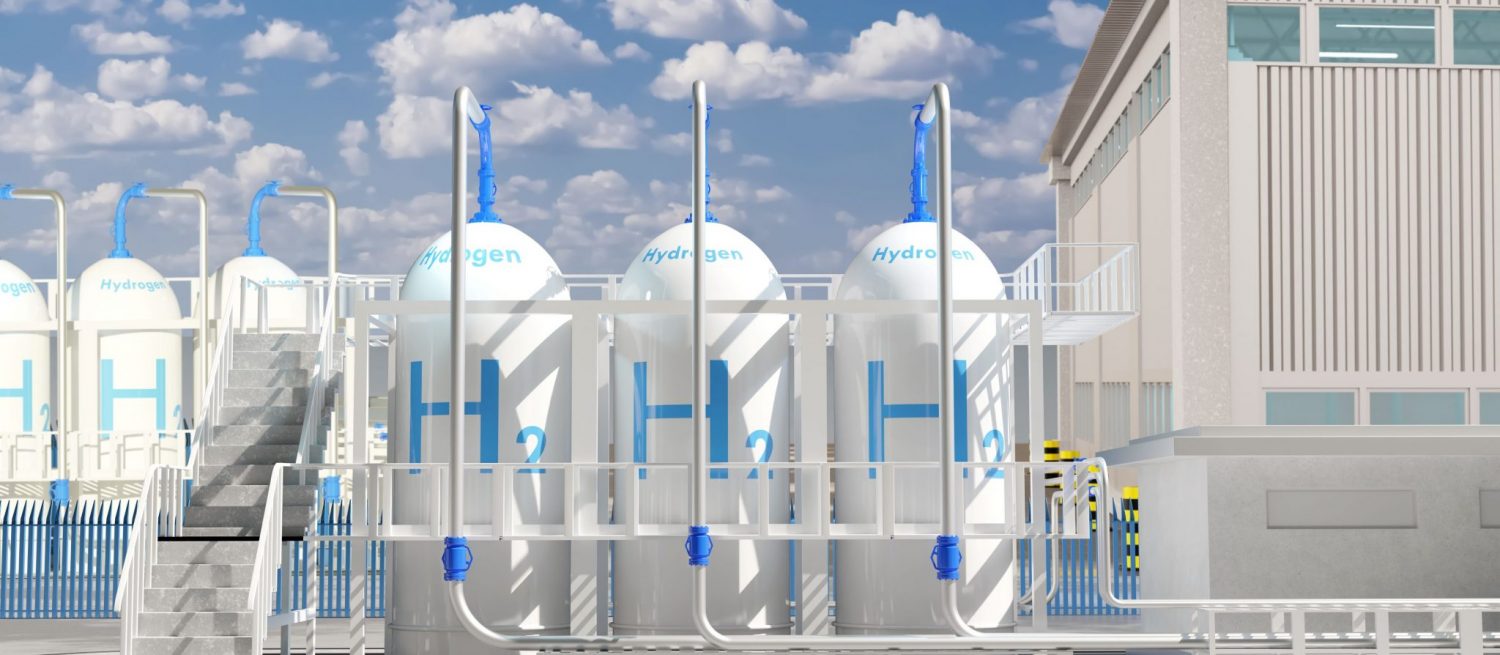

Power Plants Seek Hydrogen For Clean, Renewable Energy
Hydrogen For Clean Energy
Hydrogen has the potential to play a significant role in the transition to clean energy. It’s abundant, efficient, and unlike other alternatives, it’s considered a renewable resource and produces no emissions. Many countries, including the U.S., have invested to transition power plants from running on traditional fuel sources to using hydrogen fuel cells. Currently, most power plants use natural gas, nuclear energy, and coal to produce electricity. According to the U.S. Energy Information Administration in 2021, “Several power plants are moving to a mixture of natural gas-hydrogen fuel in combustion gas turbines. One example is the 485 MW Long Ridge Energy Generation Project facility in Ohio with a gas-fired combustion turbine that will run on a 95% natural gas/5% hydrogen fuel blend in a gas turbine with a plan to eventually use 100% green hydrogen produced from renewable resources. Another example is Intermountain Power Agency’s planned conversion of an existing coal-fired power facility in Utah to a combined-cycle gas-fired facility that would initially use up to 30% hydrogen and eventually use 100% green hydrogen.”
How Hydrogen is Produced and Distributed
The two most common methods for producing hydrogen are steam-methane reforming and electrolysis. Researchers are also exploring and developing other production methods, which could provide more environmentally friendly, cost-effective options.
Steam-Methane Reforming: Steam-methane reforming is the most common and economical way to make hydrogen gas on a large scale. Methane from natural gas is combined with high-temperature steam and a catalyst to create pure hydrogen and carbon dioxide. The hydrogen gas is then further purified to client specifications.
Electrolysis: In Electrolysis, an electric current splits water into hydrogen and oxygen. If the electric current is produced by renewable sources, for example solar or wind power, the resulting hydrogen is considered renewable. Electrolysis itself, does not produce any byproducts or emissions other than hydrogen and oxygen. On a large, commercial scale, the process may be referred to as power-to-gas, where power is electricity and hydrogen is gas.
Other methods of producing hydrogen
- • Fermentation: Biomass is converted into sugar-rich feedstocks that can be fermented to produce hydrogen.
- • High-Temperature Water Splitting: High temperatures generated by solar concentrators or nuclear reactors drive chemical reactions that split water to produce hydrogen.
- • Photobiological Water Splitting: Microbes, such as green algae, consume water in the presence of sunlight and produce hydrogen as a byproduct.
Currently, Hydrogen is distributed using three different methods. These include a pipeline, a high-pressure tube trailer, or a liquified tank.
- • Pipeline: This is the least expensive way to deliver large volumes of hydrogen, but the capacity is limited because only about 1,600 miles of pipelines for hydrogen delivery are currently available in the United States.
- • High-Pressure Tube Trailers: Hydrogen gas is transported by truck, railcar, ship, or barge in high-pressure tube trailers. It’s primarily used for distances of 200 miles or less.
- • Liquefied Hydrogen Tankers: Hydrogen is cooled, liquified, and transported by a tank. It can travel longer distances by truck, railcar, ship, or barge.
How Hydrogen Power Plants Operate
Large tanks of liquid hydrogen feed into thousands of hydrogen fuel cells. Hydrogen fuel cells are solid structures that work like batteries, containing an electrolyte fluid and two terminals. The reactants, typically hydrogen and oxygen, flow into the cells. They merge with the electrolyte to produce a charge, which creates water as a byproduct. The water flows out through another port while the electricity is siphoned off the terminals and held in multi-ton batteries until needed. At that point, it’s sent out through the local power grid just like any other type of power plant.
Benefits of Hydrogen Energy
Not only is it a clean and renewable resource with health and environmental benefits, but Hydrogen provides flexibility because it can store electricity during times of excess generation for use during periods of peak demand. Further, locally produced hydrogen increases the nation’s energy security by decreasing the need for imports and creating industry employment opportunities across a variety of markets. Hydrogen power plants are only the beginning. Affordable and available Hydrogen is leading to an accelerated increase in its applications and investment in future research.
Hydrogen at Rocky Mountain Air
Rocky Mountain Air offers liquid or compressed hydrogen in various concentrations and purities. We also offer bulk hydrogen options for our partners, such as tanks and trailers, and scheduled refills on-site for such applications. Contact your local branch today in Colorado, Utah, Idaho, Wyoming, or Nebraska to discuss your hydrogen uses, or to set up a usage evaluation. We look forward to serving you with flawless dependability!



